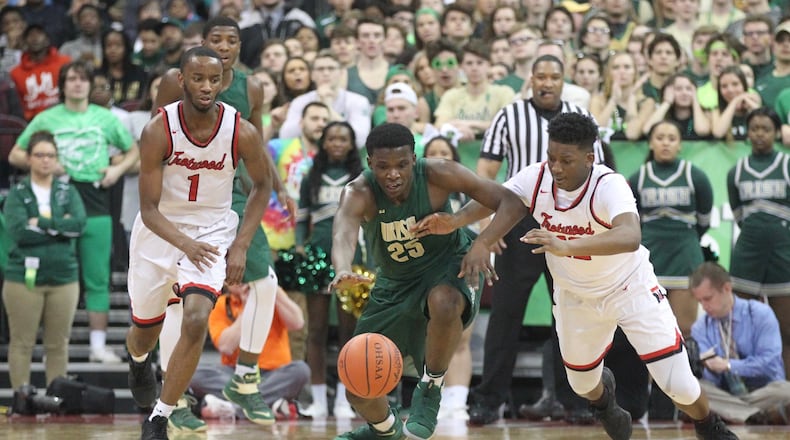I thought so when the first divisional alignments were announced a year or so ago, during the football playoffs last fall and at the boys' basketball state tournament last month.
The announcement this week of boys’ basketball divisions for next season did not change anything for me, either.
RELATED: Carroll basketball moves up to Division I
As previous ideas failed to pass, I concluded maybe the old system was just as good as it gets without breaking up public and private schools completely, something I don’t support at all, or preventing anyone who transfers from being eligible at their new schools, which is really not feasible or fair for multiple reasons.
So where this all ended up looks like a good compromise, a significant yet conservative change.
OHSAA spokesman Tim Stried confirmed that was essentially the goal, but he added, “When you ask the OHSAA if competitive balance is working or not, our answer is not based on who wins the state championship, and we tried to make that clear from the beginning.
“All this does is change how teams are placed in their division.”
Placing teams in different divisions is inevitably going to affect who wins state championships, of course, and that was vividly on display in Columbus last month.
With private schools such as Akron St. Vincent-St. Mary and Cleveland Villa Angela-St. Joseph having won multiple state championships in multiple divisions, I thought boys’ basketball was the area that most needed some recalibration.
Notably absent from this year’s Final Four was Cleveland Villa Angela-St. Joseph while Cleveland Lutheran East, the back-to-back champion in Division IV, returned to the capital city but as a member of Division III.
Central Ohio powers Columbus Africentric and Harvest Prep both moved up, too, though not everyone was directly affected.
Akron SVSM remained in Division II and won a rematch with Trotwood-Madison.
»RELATED: Boys final four state results ; High-scoring game shut down by Irish
Ironically, this season the Fighting Irish are going to Division I — and the Rams would be there too if not for the competitive balance numbers moving several teams ahead of them when enrollment figures were reconfigured.
Is it fair smaller schools might have to play up? Since they aren’t bound by the same territorial restraints as public schools, yes. That seems like a good way to level the playing field while also affecting public schools that draw players from other districts.
The Division III final four offered a reminder the new competitive balance measure has its limits, though.
Cincinnati Deer Park stormed through the Southwest District to win the Division III title with a perfect 29-0 record.
The Wildcats had nine transfers, and coach Steve Gentry made no apology for how his team was constructed.
“If a parent moved to a new district, so be it? What do you want me to do? There’s nothing I can do,” Gentry said after his team beat Africentric in the championship game. “If a kid moves into our district, we only have one high school in our district. You’ve got to go to Deer Park, you know what I mean? So if a kid moves in, he becomes my kid regardless of where he came from, but I’ll make sure he stays humble to the community, to the school, to the little kids.
“We’re gonna follow the rules to the ’t’. You know?”
He was adamant that Deer Park passed every test from the OHSAA, and Stried confirmed no residence or recruiting violations have been found.
Does that mean the new rules don’t go far enough?
I would say no.
The popular opinion seems to be that too many transfers are bad for high school sports.
Most, myself included, would rather root for those teams that grow up playing together than see the best players changing schools looking for the easiest path to the top.
But this is an issue in which my position has evolved.
Maybe the dastardliness of transfers has been overblown.
Perhaps we shouldn’t be so quick to judge.
»RELATED: All-Area boys basketball
Sure, some players are going to change schools with visions of state championship rings in their heads, but no doubt others will find themselves in a place they don’t fit. Inevitably, some players truly need a new place to shine, and that’s OK.
Beyond that, the Division III champions might make some folks uneasy, but the provision in the rules that allowed all those transfers to play absolutely has to be there.
Players whose parents simply move because they changed jobs or bought a bigger house or whatever other non-athletics reason that might come about should not be punished, and if that allows transfers who are motivated solely by wanting to play for a different team to do so too?
That’s just the way it is.
In either case, there could be consequences from the competitive balance initiative, but everyone gets to play.
And that’s what matters most at the end of the day.
About the Author

